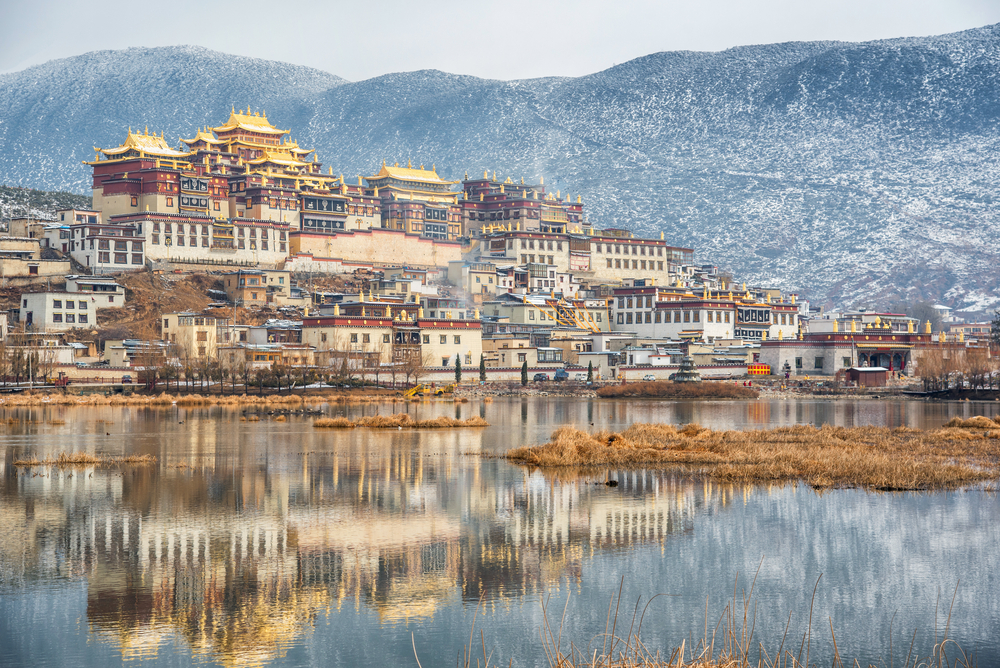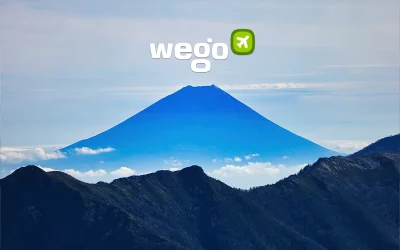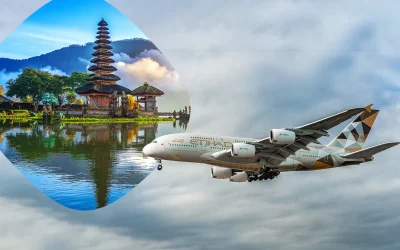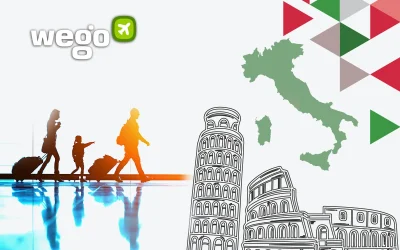With postcard views of the dramatic Himalayan mountain range, impressive monasteries, and some of the warmest hearts, a trip to Tibet is peerless. While most people wouldn’t think of braving the Tibetan winter, here are some reasons why wintertime might just be the perfect period to visit:

It is actually sunny and not particularly cold
Wintertime in Tibet isn’t really all that cold. While some areas may experience heavy snowfall, the temperatures stay typically between 5℃ and 10℃ during the day.

Beijing Lu in Lhasa during winter
There is also abundant sunlight with much clearer air compared to the summer months and little rainfall as well. Some of the last things we want when traveling are fog and rain, which is not great for photos and also not particularly safe. This cool, dry weather is also perfect to enjoy with a plate of steaming-hot Momos (Tibetan meat dumplings).

Costs are significantly lower during the winter
Those looking out for a great deal or want to save some money on their travels would be delighted to know that visiting Tibet in the wintertime means huge savings. With lesser tourists coming, the prices for transportation to and lodging are up to 50% lower than the summer months.
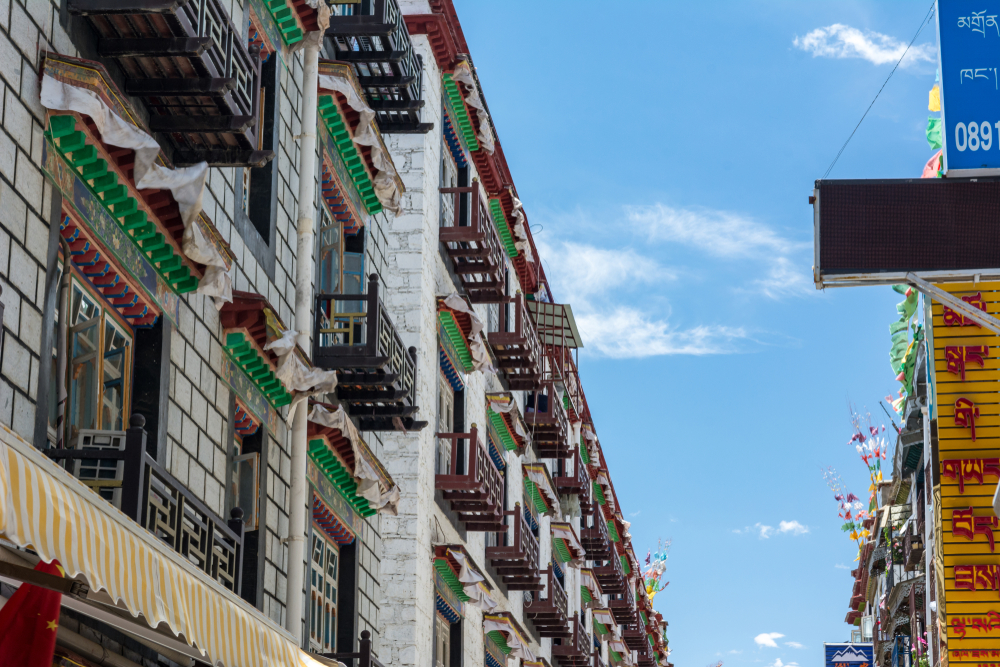
Buildings in Pargor Subdistrict, Lhasa
On top of that, the entrance fees are also waived during these months for some world-renowned attractions, including the magnificent Potala Palace and the serene Namtso Lake. Other iconic attractions like the Pelkor Chode Monastery and Yamdrok Lake in the Gyantse area would see reduced prices.

A more immersive and authentic experience
The winter months are when Tibetans make their pilgrimage to Lhasa, and you would be able to witness the locals with their spinning prayer wheels and butter lamps as part of their worship.
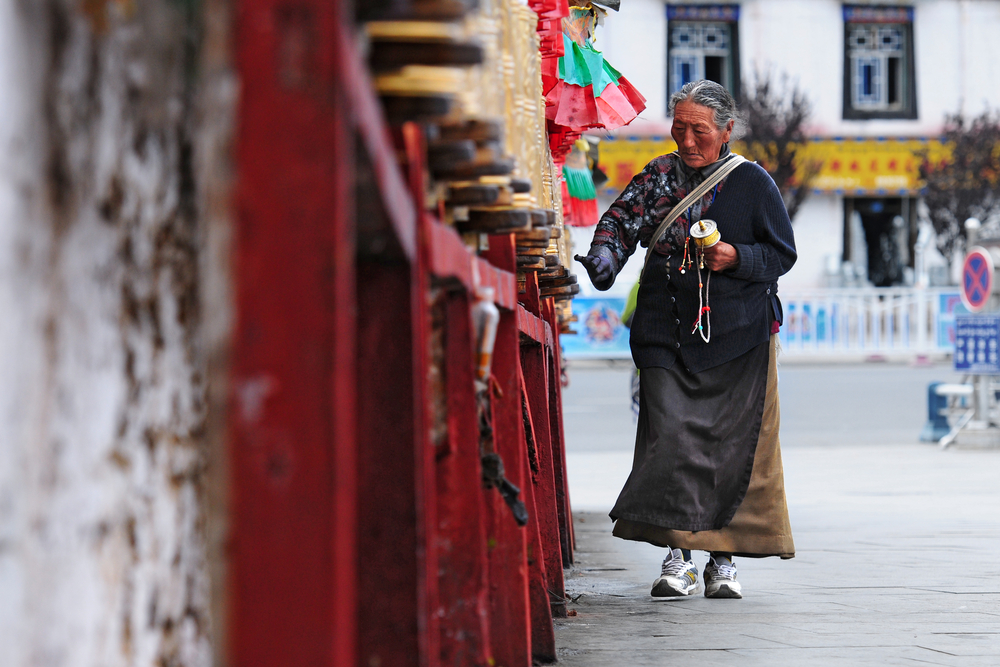
With fewer tourists around, you’d also get more opportunities to have sincere interactions with the locals. Get to know them by observing their traditions, have some meaningful conversation with them, and some of them may even open their homes to you where you can get a taste of what it’s like as a local.

There are also many festivals and celebrations that happen during the winter months, such as the Palden Lhamo Festival and Lhabab Duchen Festival where you would be bound to be immersed in incense-filled air and vibrant spectacles.

Tibetan prayer flags
There are also Losar (Tibetan New Year), Monlam Prayer Festival and Choe-nga Choepa (Butter Lamp Festival), however, these are only accessible to Chinese citizens as the Chinese government typically shuts Tibet out from foreigners during this period.

Cham dancers during Gyalpo Losar (Tibetan New Year) celebration
This would be a great way to get a deeper understanding of Tibetan culture and their way of life. Sites would also be less crowded, enabling you to experience the serenity of the spectacular natural beauty and the spiritual reverberations from the religious prayers.
The vast expanse of unadulterated landscapes
With clear skies, a pure white blanket of snow, and nary another human in sight, you would practically have the natural sights of Tibet all to yourself. One such example would be the Namtso Lake, where you would see a partially (or fully, depending on the weather) frozen lake set against snow-capped mountains.

Great visibility also means being able to snap that perfect photo, be it for the annual National Geographic Travel Photo Contest, or for an Instagram post to share with your followers. If you’re an “in-the-moment” kind of person, simply bask in all of the stunning tranquility that the roof of the world has to offer.

All in all, Tibet is a hidden gem during winter: you get a more genuine experience, better sights, and also terrific savings.

